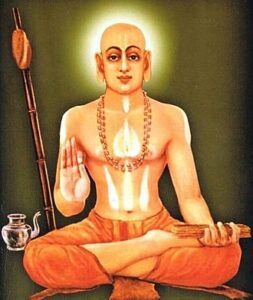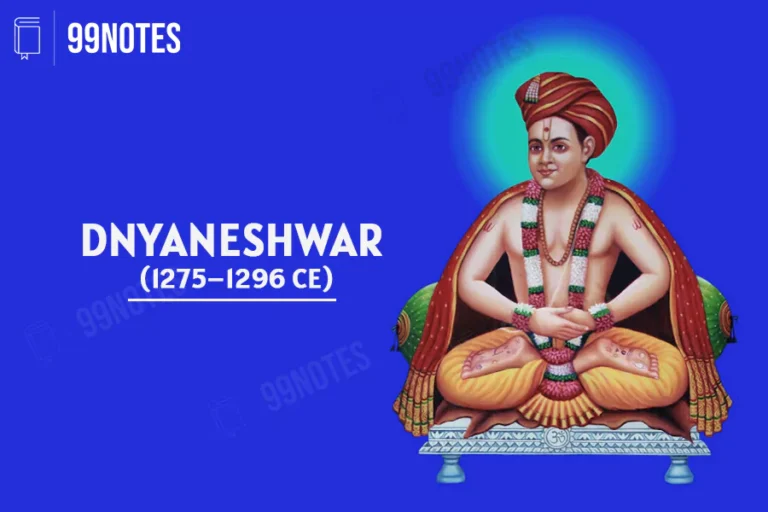Madhvacharya : Life, Philosophy, Books, Dvaita vedanta, and Death
Madhvacharya
Madhvacharya was a revered Hindu philosopher and theologian, made a lasting impact on Indian philosophy. He is best known for introducing the Dvaita (dualistic) school of Vedanta, which proposed a fundamental distinction between the individual soul (Atman) and the ultimate reality (Brahman).
Early Life of Madhvacharya
Madhvacharya also known a Purna -Prajna and Ananda Tirtha, a significant figure of the Bhakti movement and a profound philosopher. He was born in a Brahmin family in a small village near Udupi, Karnataka, India. The exact date of his birth and life span is not confirmed but historian has controvercy between two time Periods of his life – 1199-1278 & 1238-1317. His birth name was Vasudeva, and his early life was deeply inclined towards spirituality and Vedic text. Madhvacharya is believed to have been a gifted child, who mastered the Vedas and other sacred texts effortlessly.

Philosophy of Madhvacharya
Sri Madhvacharya’s philosophical journey began at a young age of 16, he was initiated into sannyasa (monastic life), adopting the name Madhvacharya. After that he started a search of knowledge, studying the Vedas, Upanishads, Puranas, and other Hindu Scriptures.
Establishment of Dvaita Vedanta
Madhvacharya is famous for founding the Dvaita (dualistic) school of Vedanta philosophy. His philosophy represents a notable departure from the dominant monistic interpretation of Vedanta, particularly Adi Shankara’s Advaita Vedanta.
Madhvacharya’s Dvaita Vedanta philosophy proposes a rigorous duality between the particular soul (jiva) and the ultimate reality or God (Brahman). He postulated that both God and individual souls are eternally separate entities and that the physical universe is not a mirage but an actual existence.
Foundational Principal of Dvaita Vedanta Philosophy
Madhvacharya during his entire life spread his thoughts and teaching for well- being of individual. Important and key teachings of Madhvacharya philosophy:
- Pancha Bheda: Madhvacharya proposed five fundamental differences in realitly known as Panch Bheda. His Dvaita Vedanta is characterized by five fundamental distinctions:
1. Between God and individual souls
2. Between God and matter
3. Among individual souls
4. Between matter and individual souls
5. Among various types of matter
- Eternal Reality of the World: Contrary to Advaita’s maya (illusion) concept, he believed in the real and distinct existence of the physical world.
- Hierarchy of Souls: Madhvacharya introduced the idea that souls have different intrinsic natures, leading to a hierarchical system.
- Dualism: His philosophy contrasts sharply with the non-dualistic (Advaita) Vedanta of Adi Shankaracharya, arguing that God, individual souls, and the world are eternally distinct entities.
Madhvacharya Books and Major works
Madhvacharya was a highly effective writer and his literary corpus is extensive. Some of his major works include:
- Commentaries on the Prasthanatrayi: Including the Brahma Sutra Bhashya, Upanishad Bhashyas, and Bhagavad Gita Bhashya
- Madhvacharya Books:
1. Anuvyakhyana: A philosophical supplement to his Brahma Sutra Bhashya
2. Madhva Vijaya: A hagiography detailing his life and teaching
3. Tattvavada: Outlining the Principles of Dvaita Philosophy
- Devotional Texts: He composed several works extolling the virtues of Lord Vishnu. He also advocated for the worship of Lord Vishnu as the supreme deity.
Establishment of Udupi Krishna Temple
Madhvacharya is credited to the establishment of the Krishna Temple in Udupi, Karnataka. He is said to have discovered the idol of Lord Krishna in a block of Gopichandan clay and placed it in the Udupi Krishna temple. This Temple later become a significant center and hub for the propagation of his teachings.
Madhvacharya’s teaching significantly influenced Hinduism, particularly with the Vaishnavism Sector. He established eight Mathas (monastic orders) in Udupi to promote and preserve his Dvaita philosophy, which continue to be significant centers of religious learning.
End of his Life
It is said that Madhvacharya had a long life in which he only engaged himself with teaching and preaching his philosophy. The specific circumstances of his death remain unknown. Believers claim that he disappeared when teaching his students, which resulted in him being regarded as a god incarnation. According to some religious documents Madhvacharya left to Badrinath in 1278/1317 C.E. at the age of 79.
Conclusion
Madhvacharya had immensely contributed to Indian Philosophy and Hinduism making him an important figure in the history of Indian philosophy. The Dvaita Vedanta of His challenged established conventions, giving a novel understanding about the nature of reality and freedom. His doctrines have continued influencing and guiding philosophical ideas as well as religious beliefs, hence he remains one of the fundamental figures in the history of Indian spirituality.





![Panchayatana Style Of Temple Architecture [Complete Upsc Notes] | Updated November 17, 2024 Panchayatana Style Of Temple Architecture [Complete Upsc Notes]](https://99notes.in/wp-content/uploads/2023/03/panchayatan-style-99notes-upsc-768x512.webp)
